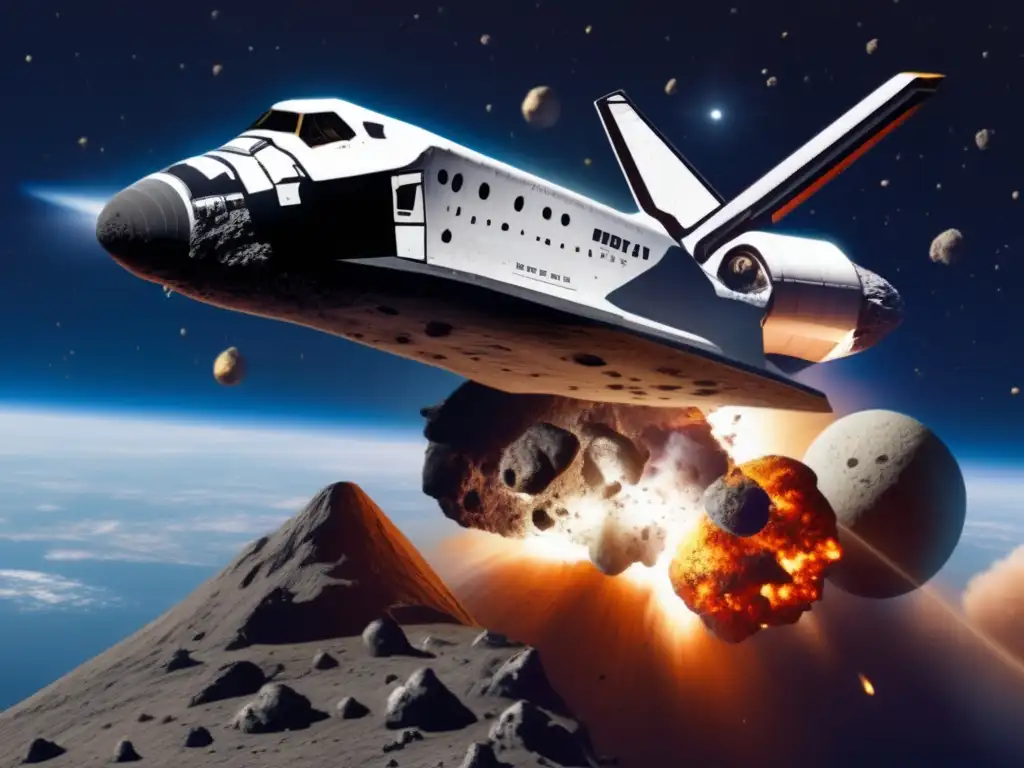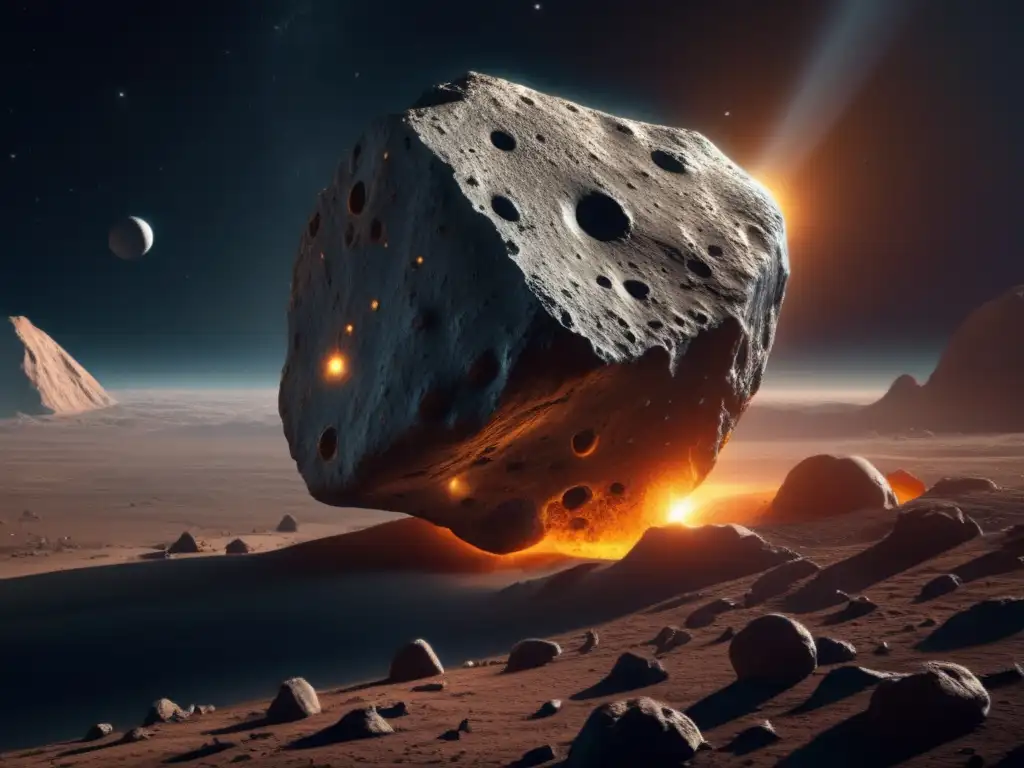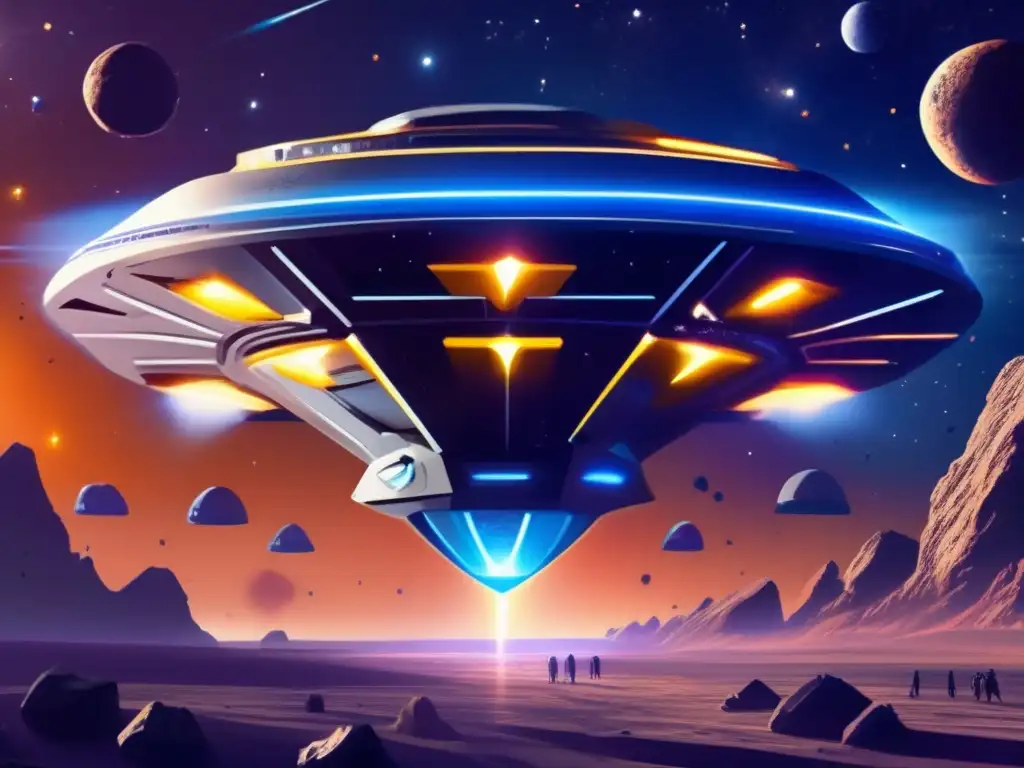Staying Safe In The Cosmos: Strategies For Asteroid Defense

Introduction
Asteroids can cause catastrophic damage if they collide with Earth, as evidenced by the impact that wiped out the dinosaurs over 65 million years ago. In recent times, asteroid impacts have been a topic of concern, as they pose a threat to human life and infrastructure. Therefore, it is imperative to develop strategies to protect the Earth from asteroids. In this article, we will discuss various strategies for asteroid defense and how they work.
Nuclear Explosions

Theoretical Possibility of Nuclear Explosions
One of the first ideas that come to mind when talking about asteroid defense is using nuclear explosions. Several science fiction movies have shown astronauts detonating nuclear bombs on asteroids or comets to prevent them from colliding with Earth. However, this approach is not feasible in reality.
The Challenges of Nuclear Explosions
The challenges are many, including the difficulty of aiming, the size of the asteroid, and radiation fallout. Moreover, a nuclear explosion would break up a large asteroid into smaller ones, which could be even more dangerous as fragments could spread over a wide area and cause significant damage.
Lessons Learned from Previous Attempts
In 2007, Japan's Aerospace Exploration Agency (JAXA) launched a spacecraft named Hayabusa to land on an asteroid, collect samples, and return to Earth. In 2019, JAXA conducted another mission, Hayabusa2, which successfully landed two rovers on the surface of the asteroid Ryugu. These missions have provided valuable data on the physical and chemical composition of asteroids, which could inform future asteroid defense strategies.
Kinetic Impactors

The Principle behind Kinetic Impactors
A kinetic impactor is a spacecraft that collides with an asteroid at high speed, altering its trajectory so that it misses Earth. This approach avoids the use of nuclear explosions and their associated risks and controversies. The kinetic impactor technique relies on accurate targeting and careful engineering of the spacecraft and its trajectory.
Advantages of Kinetic Impactors
Kinetic impactors are considered to be one of the most practical and reliable asteroid defense techniques to date. NASA, in collaboration with other space agencies, has proposed the Double Asteroid Redirection Test (DART) mission, which will launch a kinetic impactor spacecraft towards the asteroid Didymos in 2021. DART will demonstrate how to change the trajectory of an asteroid using a kinetic impactor and is expected to provide valuable information for future asteroid defense strategies.
Potential Risks of Kinetic Impactors
The kinetic impactor technique is not without risk. If the spacecraft’s trajectory is off or the targeting is inaccurate, the impact could cause the asteroid to break into more dangerous pieces or miss the asteroid altogether, wasting time and resources. Moreover, the kinetic impactor technique is only effective for smaller asteroids; larger ones may require more complex and sophisticated methods.
Laser Beams

The Science behind Laser Beams
Laser beams have also been proposed as a possible technique for asteroid defense. The idea is to deploy a fleet of spacecraft equipped with powerful lasers that emit high-energy beams to vaporize parts of the asteroid's surface, creating jets of gas that push the asteroid towards a different trajectory. This approach is known as a laser ablation or the standoff laser asteroid deflection (SLAD) technique.
The Advantages of Laser Beams
The laser beam technique has several advantages, including its precision, flexibility, and reduced risk of fragmenting the asteroid. Laser beams can also be used to deflect asteroids with a lower mass, which could avoid the need for nuclear explosions or kinetic impactors.
Challenges and Limitations of Laser Beams
The laser beam technique faces several challenges, such as the need to develop powerful, lightweight lasers that can withstand the harsh conditions of space and operate over long distances. Furthermore, the SLAD technique may require several spacecraft working in tandem, which could complicate the mission's logistics and increase its cost.
Gravity Tractor

The Principle behind Gravity Tractors
A gravity tractor is a spacecraft that uses its gravitational field to exert a pull on an asteroid to slightly alter its trajectory. The spacecraft would hover close to the asteroid's surface, using its mass and gravity to gradually change the asteroid's path. The spacecraft would need to remain close to the asteroid for a long time, thus requiring a stable orbit around the asteroid.
The Advantages of Gravity Tractors
The gravity tractor technique does not require the use of explosives, so it is safer and less controversial than other methods. It also avoids the risk of fragmenting the asteroid or creating radiation fallout. The gravity tractor technique is suitable for asteroids too large or massive to be deflected by a kinetic impactor or laser beams.
Potential Challenges of Gravity Tractors
The gravity tractor technique requires a long lead time to implement and may need multiple missions to ensure that the spacecraft remains in the correct position for an extended period. The spacecraft would also require precise navigation, which could be challenging in space.
Frequently Asked Questions

-
Can we predict when an asteroid will hit Earth?
Yes, scientists can predict the path of asteroids with reasonable accuracy using telescopes and computer simulations. However, due to the complex nature of asteroid trajectories, it is impossible to predict precisely when or where an asteroid will impact Earth.
-
What would happen if a large asteroid hit Earth?
A large asteroid hitting Earth would cause catastrophic damage, releasing energy equivalent to millions of atomic bombs and creating a shockwave that could wipe out entire cities. It could also trigger earthquakes, tsunamis, and other natural disasters that would severely threaten human life and infrastructure.
-
How often do asteroids hit Earth?
Asteroid impacts are rare events, with large asteroids colliding with Earth once every few million years. Smaller asteroids hit Earth more frequently but typically burn up in the atmosphere before reaching the surface.
-
What is the likelihood of an asteroid hitting Earth in the near future?
The chances of a large asteroid hitting Earth in the next few decades are low, but not zero. Scientists estimate that there are thousands of near-Earth asteroids that pose a potential threat to Earth. Therefore, it is essential to continue developing asteroid defense strategies to protect against such a possibility.
-
What can we do to help prevent asteroid impacts?
Individuals can support scientific research into asteroid defense strategies by donating to organizations that conduct such research, such as NASA's Near-Earth Object Observations Program. Educating the public about the risks of asteroids and their potential impact can also help raise awareness and encourage advocacy for solutions.
Conclusion
In conclusion, asteroid defense is a crucial aspect of space exploration and human survival. While no single technique is guaranteed to be effective against all asteroids, a combination of kinetic impactors, laser beams, gravity tractors, and other technological innovations could provide a comprehensive solution to the asteroid threat. Continued research and investment in asteroid defense technologies are essential to ensure the safety and security of life on Earth.
Thank you for reading this article on staying safe in the cosmos and learning about strategies for asteroid defense. We hope you found it informative and helpful. Please share your thoughts in the comments section and consider subscribing to www.asteroidrealm.com for more exciting asteroid news and updates.
Additional Resources

For further information on asteroid defense, please visit:
- NASA Planetary Defense Coordination Office
- NASA Center for Near-Earth Object Studies (CNEOS)
- European Space Agency: Space Debris and Spacecraft Operations
 Avoiding Extinction: Current Measures In Asteroid Defense
Avoiding Extinction: Current Measures In Asteroid Defense Fighting Back: The Science Of Planetary Defense
Fighting Back: The Science Of Planetary Defense Cosmic Gatekeepers: Our Defense Against Asteroids
Cosmic Gatekeepers: Our Defense Against AsteroidsIf you want to discover more articles similar to Staying Safe In The Cosmos: Strategies For Asteroid Defense, you can visit the Planetary Defense category.
Leave a Reply

Articulos relacionados: